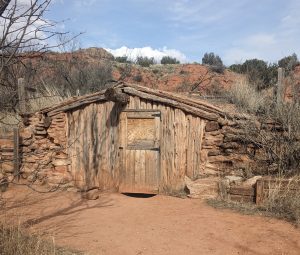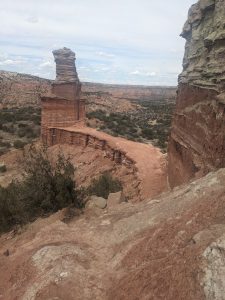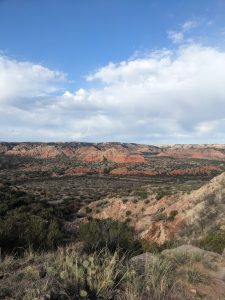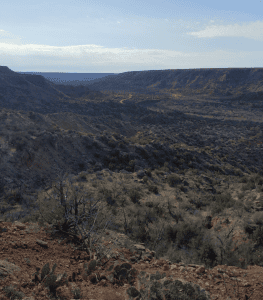Experience the second largest canyon in the United States with more than 30 miles of trails to explore. At 120 miles long, up to 800 feet deep and 20 miles wide, Palo Duro dwarfs the competition (the Grand Canyon itself aside). Colorful geologic layers highlight the cliffs and hoodoo rock formations boggle the mind.
Table of Contents
Palo Duro Canyon Trails

Givens, Spicer, & Lowry Trail: A Quiet, Easy Hike in Palo Duro
Givens, Spicer, & Lowry Trail is a fun, relatively easy meander through quintessential Palo Duro. …

Rylanders Fortress Cliff Trail: Finding Solitude in Palo Duro
The trail’s description proudly proclaims that the only way to access the Rylanders Fortress Cliff …

Paseo Del Rio Trail: Convenient and Easy
Paseo Del Rio Trail is good for a family with littles looking to take an …

Lighthouse Trail: An Iconic Palo Duro Hike
I normally don’t head straight for the most popular trails in a park because they …

Lower Comanche Trail: The Perfect Hike for Exploring Palo Duro
This trail, named from the Comanche Native Americans who, long ago, supplanted the Apache people …

Rock Garden Trail: Steep, but worth it
This trail’s claim to fucking fame is that it is the one and only trail …

Sunflower Trail: A Fun, Family Friendly Hike in Palo Duro
This pleasant little nugget of a trail runs alongside Prairie Dog Fork of the Red …
Find a Trail on the Map
If you see this after your page is loaded completely, leafletJS files are missing.
Learn About Palo Duro Canyon
The canyon itself is estimated to be around a million years old, but much of the rock that makes up the cliffs is far older, dating to the age of the dinosaurs (if not before). The varied habitats created by the canyon are home to many fascinating and classic Texas creatures including roadrunners and coyotes, bobcats, and even Texas Longhorns. It’s also home to the the Palo Duro mouse and the Texas horned lizard, both at risk of becoming endangered (so tread lightly).
In more recent centuries, Palo Duro Canyon and the surrounding area have been home to many different peoples. In addition to early First Peoples, both the Apache and the Comanche Native Americans have occupied the region.
The park itself was purchased by the state in 1933 and constructed by the Civilian Conservation Corps over the next 5 years – though it opened long before it was finished, in 1934.
Important Note: If you find anything you think might be a historical artifact or fossil, leave it the fuck alone and tell park staff what you saw and where. Leave the archeology and paleontology to the professionals.
This Palo Duro Canyon State Park page is under construction, and I’ll be updating it with more information and resources over time. If there’s something you’d like to see shared here, let me know!
